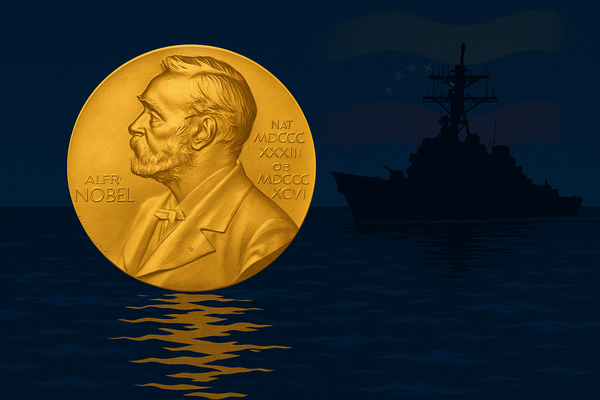BRICS vs. the Dollar Isn’t About Collapse. It’s About Leverage.

Key Takeaways
- BRICS trade in local currencies is rising but reserves still sit in USD.
- De-dollarization is less about economics, more about negotiation power.
- The euro’s stagnation proves how hard it is to rival the dollar.
The headlines scream “the end of dollar dominance.” The reality is quieter, but more interesting. The U.S. dollar isn’t collapsing — it still accounts for more than half of global reserves and anchors the deepest, most liquid capital markets in the world.
But something new is happening: BRICS nations are not trying to dethrone the dollar outright. They are using alternatives — yuan, rupees, reals — as tools of leverage. Currency politics has become a bargaining chip in the contest for power.
The Noise vs. the Signal
The noise: declarations of “de-dollarization,” viral maps of countries signing up for BRICS, pundits predicting an imminent collapse of U.S. monetary power.
The signal: as of mid-2025, 58% of global reserves are still in dollars — down from 72% in 2000, but still unrivaled. The euro is second at 20%. The yuan hovers around 3%.
At the same time, BRICS intra-trade in local currencies has surged. Between 2024 and 2025, settlements in non-dollar currencies among BRICS members rose by nearly 20%. That’s real movement — but it doesn’t make the dollar irrelevant.
The takeaway: global reserves and trade flows tell different stories. The first shows persistence. The second shows experimentation.
BRICS’ Real Play: Negotiating Power
Consider the deals:
- China–Russia: Oil settled in yuan, insulating Moscow from U.S. sanctions.
- China–Saudi Arabia: Increasing share of crude sold in yuan, giving Riyadh leverage in its delicate dance with Washington.
- India–Africa: Rupee settlements for imports, reducing dollar liquidity pressures in Nairobi and Lagos.
- Brazil–China: Real–yuan mechanisms to shield Brazilian exporters from U.S. interest rate shocks.
None of this replaces the dollar. But each move strengthens bargaining positions. For Russia, it’s survival. For Saudi Arabia, it’s hedging. For India and Brazil, it’s autonomy in trade and debt negotiations.
This isn’t about tearing down the dollar. It’s about learning to play the same game Washington has long mastered: weaponizing currency politics.
Why the Dollar Still Holds
Why doesn’t the dollar collapse despite these moves? Three reasons:
- Liquidity and Trust. U.S. Treasuries remain the deepest safe-asset market. No BRICS currency offers the same scale or transparency.
- Network Effects. Trade finance, contracts, and pricing benchmarks are dollarized. Once embedded, switching costs are immense.
- Institutional Power. The U.S. still anchors the IMF, World Bank, and SWIFT. Alternatives exist, but parallel systems lack reach.
BRICS currencies carry their own baggage: capital controls, histories of inflation, political opacity. Even the yuan, the most credible challenger, is limited by Beijing’s unwillingness to fully liberalize.
The dollar doesn’t need to be perfect. It only needs to be the least imperfect option.
The Euro’s Lesson
Two decades ago, the euro was pitched as the great alternative. It briefly rose to nearly 30% of global reserves in the late 2000s. Today it has slipped back to about 20%. Why? Structural weaknesses: fragmented fiscal policy, repeated debt crises, and limited political union.
If even the euro — backed by advanced economies with deep capital markets — couldn’t unseat the dollar, the odds for BRICS currencies are even slimmer. The lesson: challenging the dollar takes more than ambition. It takes institutions, trust, and scale — things BRICS lack.
What to Watch Next
This contest isn’t static. The front lines are shifting:
- Petro-yuan deals. If Saudi Arabia fully commits to yuan oil pricing, that would be a symbolic break.
- IMF reform battles. BRICS pressure to expand the SDR basket would dilute the dollar’s privileged status.
- Digital currencies. China’s e-CNY cross-border pilots could chip away at SWIFT’s dominance, especially in Africa and Central Asia.
The future isn’t binary — dollar or no dollar. It’s layered. The U.S. currency will remain the reserve anchor, but BRICS will carve out zones of autonomy where the dollar can’t easily reach.
Why It Matters
For investors, policymakers, and strategists, the lesson is clear: ignore the collapse narrative. The risk isn’t the dollar vanishing; it’s the dollar being outflanked in places where U.S. leverage used to be absolute.
For companies, this means more complexity in settlements, hedging, and compliance. For governments, it means recalibrating diplomacy where dollar dominance is no longer assumed.
The noise says the dollar is dying. The signal says it’s being challenged, and in those challenges, new forms of leverage are being forged.
Closer
The dollar isn’t dying. It’s just no longer unchallenged — and that’s exactly the point.





